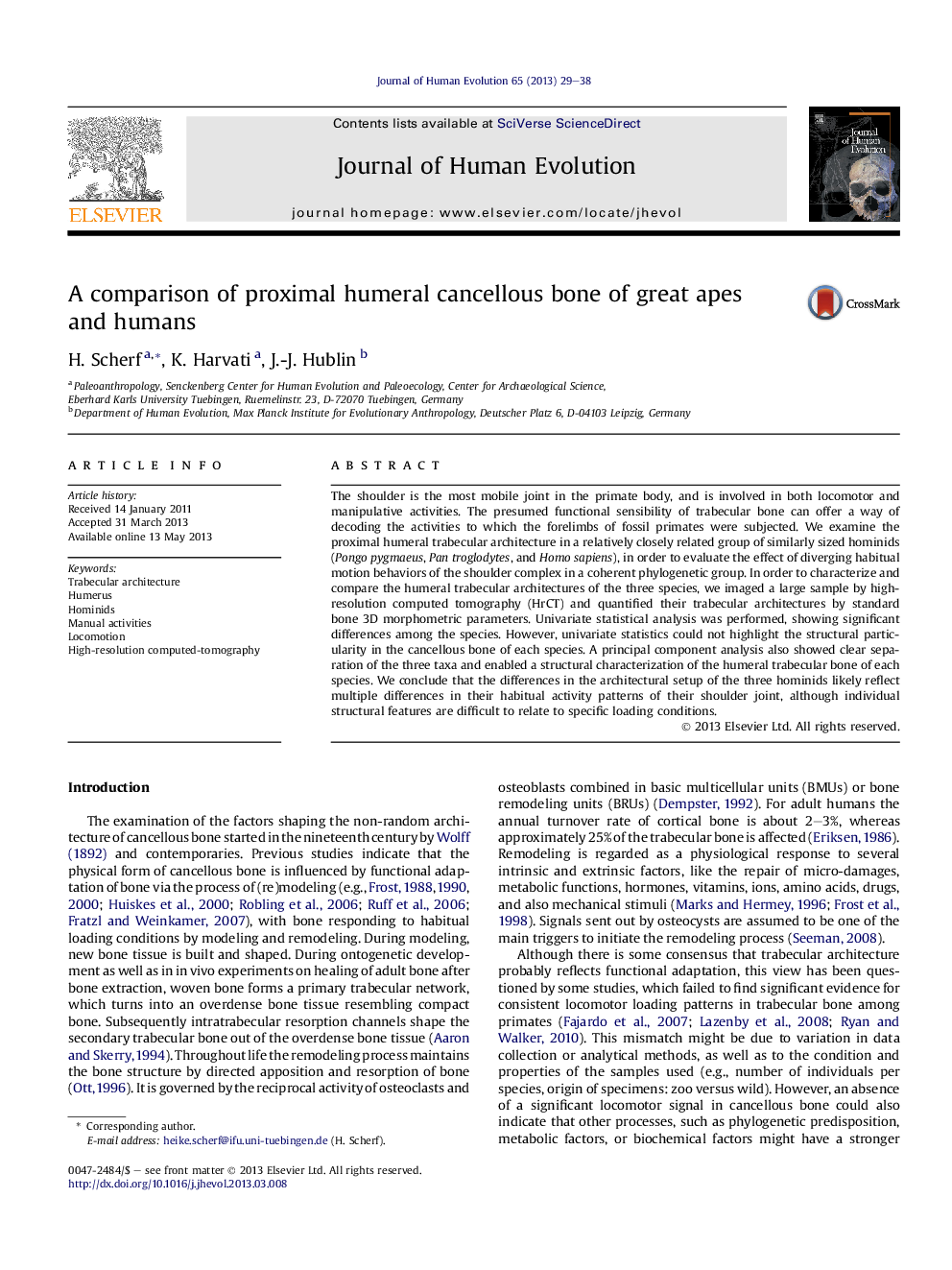| Article ID | Journal | Published Year | Pages | File Type |
|---|---|---|---|---|
| 4556184 | Journal of Human Evolution | 2013 | 10 Pages |
The shoulder is the most mobile joint in the primate body, and is involved in both locomotor and manipulative activities. The presumed functional sensibility of trabecular bone can offer a way of decoding the activities to which the forelimbs of fossil primates were subjected. We examine the proximal humeral trabecular architecture in a relatively closely related group of similarly sized hominids (Pongo pygmaeus, Pan troglodytes, and Homo sapiens), in order to evaluate the effect of diverging habitual motion behaviors of the shoulder complex in a coherent phylogenetic group. In order to characterize and compare the humeral trabecular architectures of the three species, we imaged a large sample by high-resolution computed tomography (HrCT) and quantified their trabecular architectures by standard bone 3D morphometric parameters. Univariate statistical analysis was performed, showing significant differences among the species. However, univariate statistics could not highlight the structural particularity in the cancellous bone of each species. A principal component analysis also showed clear separation of the three taxa and enabled a structural characterization of the humeral trabecular bone of each species. We conclude that the differences in the architectural setup of the three hominids likely reflect multiple differences in their habitual activity patterns of their shoulder joint, although individual structural features are difficult to relate to specific loading conditions.
